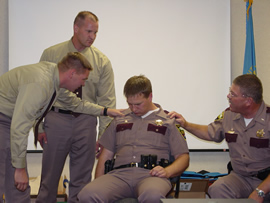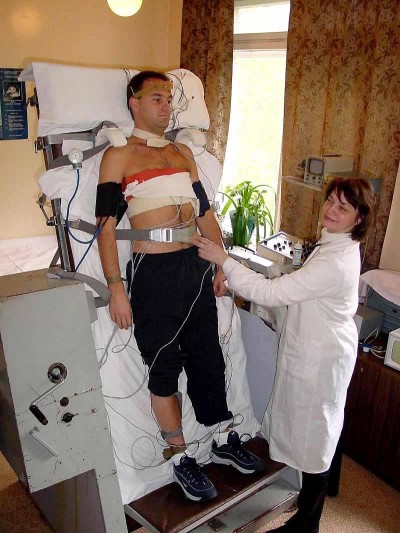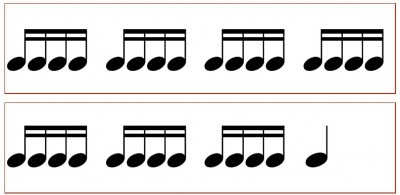Continued from part 1…
One of the best types of transfer for educating yourself is a discharge from a hospital, or in some cases from a nursing home or rehab.
It doesn’t matter where they’re going; what matters is where they’re coming from. Because your patient’s leaving a prolonged stay in skilled medical care, they should come with a whole bevy of paperwork and documentation chronicling their course of care. And you get to read it!
He presented to the ED with X symptoms. Was worked up with Y tests, and awarded Z diagnosis. Was admitted for A, B, and C treatments, and is now being discharged in Q condition.
Now if you ever get a patient with X symptoms, you have a great idea of what’s going to happen to them at the ED; you’ll know the leading diagnostic possibilities in their differential; and you can guess the types of treatment they’re going to receive. Did you learn this stuff in EMT class? I sure didn’t; for many of us, once the patient hits the door of the hospital, they’re no longer of interest. But that’s not how it works — you’re part of a sequence of care, not a one-act play, and if you don’t understand what happens later, you can’t make effective decisions now. Even something as simple as explaining to the patient what’s going to happen once they arrive at the ED is impossible if you don’t have a clue yourself. “We walk in the door… and then magic happens!”
Moreover, once you enter that patient’s room, you get to assess and communicate with that very same patient you just read about in the chart. You can say, “Ah, so this is what that disease process looks like”; you get to feel the pulse fixed at 60 by a pacemaker, listen to the lungs filled with fluid in the CHFer, and examine the scar made by a recent craniectomy. This is like getting the answer to a quiz, then learning the question. In the future, if you hear those crackling breath sounds, you’ll know what they mean, because you’ve heard the same thing in patients whose diagnosis you already knew. Remember, in the field we often never learn the answers; we make best-guesses and presumptive diagnoses, but unless we’re able to follow up later on their eventual diagnosis, we may never know if we were right. The discharge is your chance to get in at the other end of the process and put it all together.
You also get to organize your mental categories of disease. Coming out of class, you’ve learned a litany of human ailment that runs from A to Z; and whatever order you learned it in is probably the order you remember it in, except for some important, life-threatening illnesses that received special attention. But in real life, facing a real patient, the diagnosis probably isn’t the first one in the textbook, and it’s probably not the most deadly zebra; it’s probably the most common disease, because that’s what common means. Transporting a hundred patients helps you understand what’s common. You do need to remember that shortness of breath can be caused by a pulmonary embolism, but you’re coming from the wrong direction if it’s the first thing on your mind when you meet a gasping patient, because it’s just not as likely as other possibilities. Discharging a few dozen people with COPD will help rearrange this for you.
How about meds? People come out of the hospital on lots of them. Diligently reading those charts will help you learn which ones are used for which diseases, and if you make an effort, you can start to memorize their names and connect generic with trade names. And you’ll read Coumadin and then meet the elderly lady with bruises all over, complaining about how she gets cold so easily. Connecting the dots, connecting the dots.
If you’re enterprising, you can practice analyzing EKGs, interpreting labs, and reading imaging reports. It’s all in there, and it’s all part of the patient’s medical care. And no matter how distant something might be from your own scope of practice, as long is it involves the same human beings you’re treating and transporting for the same problems, then more knowledge will make you a better EMT.
More on transfers in part 3…





Recent Comments